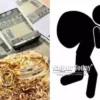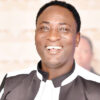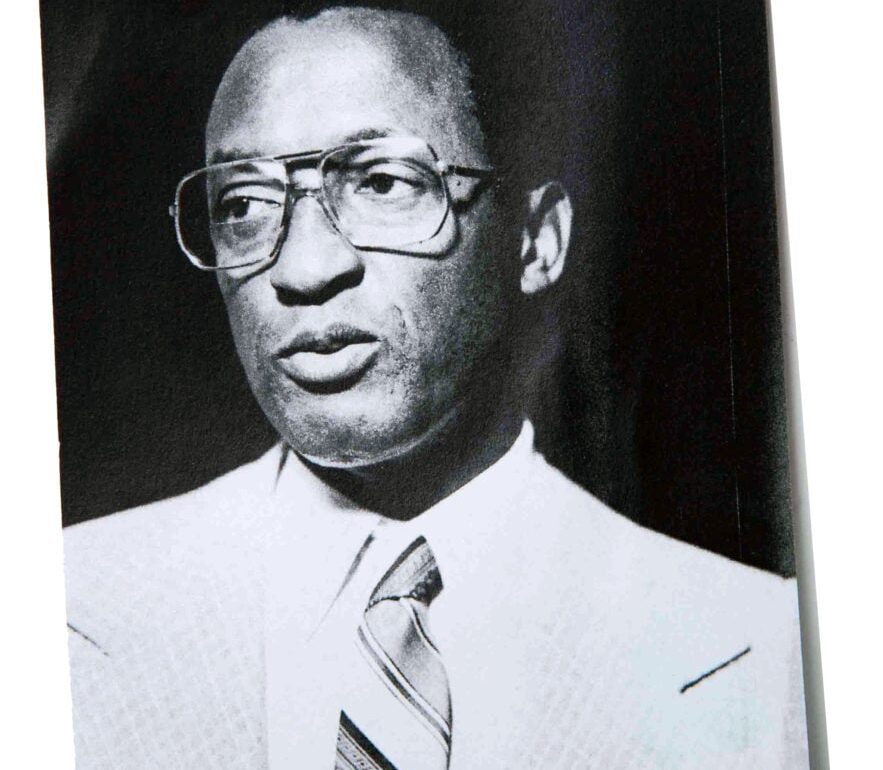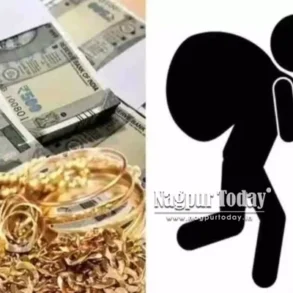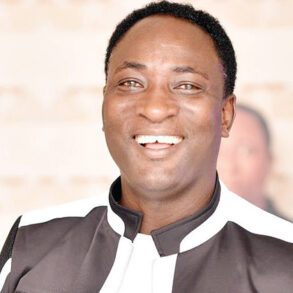It was a few weeks before the start of the 1970 National Football League season when Laverne Johnson heard the phone ring. Though she was living with her mother in Adams Morgan, Johnson had a separate phone line in her second-story bedroom. She picked up the receiver and heard a menacing voice.
“If you walk out on that field,” the man said, “you’ll never walk again.”
It had been two years since Johnson became the first Black woman to make the cheerleading squad for Washington’s NFL team. Despite everything she’d endured since, Johnson had come to relish the ritual of trotting out of the tunnel into RFK Stadium, nailing her dance steps before tens of thousands of spectators, and rooting the hometown squad to victory. And she wasn’t about to let some racist knucklehead take that away.
“I was 20 years old—I [felt] invincible,” Johnson says now. “I’m not afraid of somebody calling on the phone.”
She was, however, concerned that her mother might learn of the threat and force her to quit. So on hanging up, Johnson resolved to keep the incident to herself, telling neither her family, team officials, nor the two other Black cheerleaders on the squad at the time. Several weeks later, when fans crammed into RFK for a home opener against the Detroit Lions, Johnson dressed in her burgundy-and-gold uniform, grabbed her pompoms, and bounced onto the field as if nothing had happened.
Watch an NFL game today and you’ll see people of all ethnicities involved in the action, coaching and playing and cheering. But back then, that was hardly the case. During a time of racial tension and ongoing battles over integration, a group of young Black women were working with a now-legendary civil-rights activist to break the color barrier for the team’s cheerleading squad.
Largely overlooked by journalists and historians, these women overcame prejudice to become squad captains while forging friendships that have lasted a lifetime. Blazing a trail for the next generation, they were part of a larger movement across cheerleading that influenced American culture beyond the playing field.
“Cheerleading represented this kind of ideal femininity that was basically the purview of white women—[as if] only white women could be this icon of femininity,” says Natalie G. Adams, a University of Alabama professor and coauthor of Cheerleader!: An American Icon. But during the 1960s and ’70s, when Black women desegregated the cheer squads of high-school, college, and pro sports teams throughout the country, they helped change attitudes. “[You were] seeing these beautiful Black women on the sidelines in Washington and Dallas and San Francisco,” Adams says, and “it started painting a different picture.”
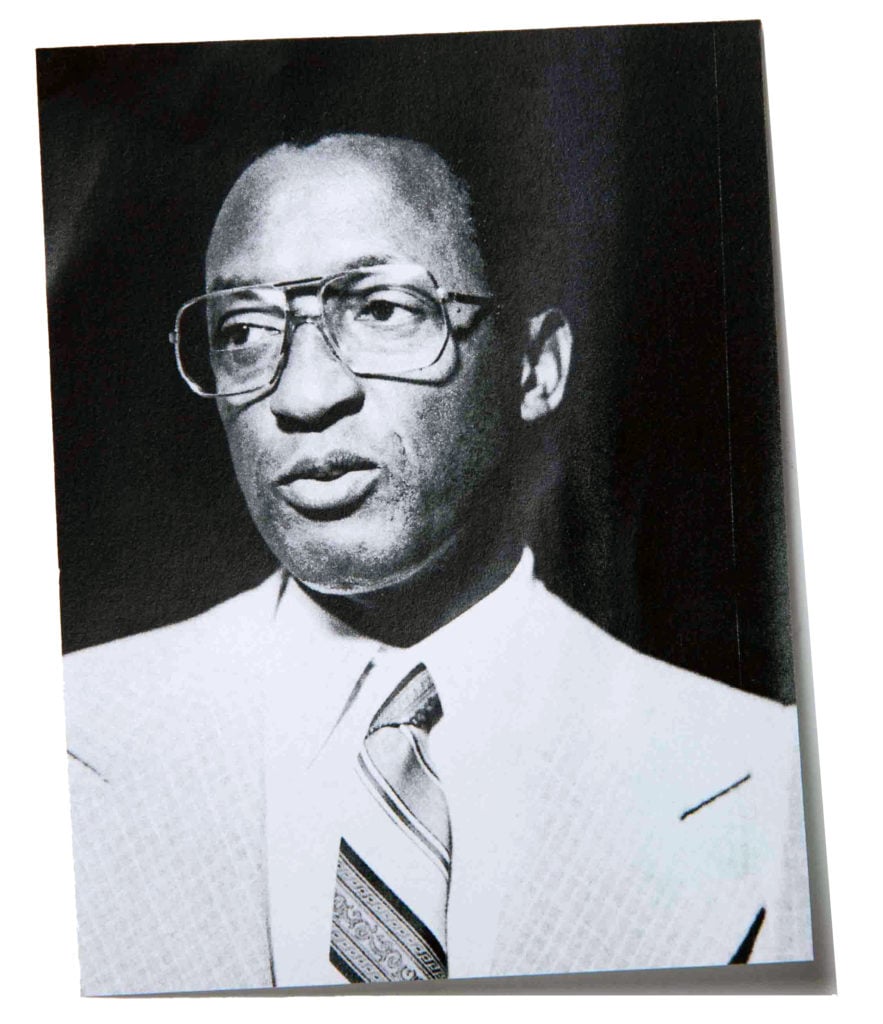
Sterling Tucker was on his way to deliver a speech in New York City in April 1968 when he heard the news. Martin Luther King Jr. was dead, murdered by a gunman on the second-floor balcony of a hotel in Memphis, Tennessee.
Though the assassination would shake the entire nation, it was particularly tough on Tucker, a longtime compatriot of King’s in the struggle for racial justice. During the 1950s, Tucker had hosted strategy sessions with King and other activists at his home in Ohio. After moving to DC to become executive director of the Washington Urban League, Tucker was a lead organizer for the 1963 March on Washington, where some 200,000 people packed the National Mall to hear King’s “I Have a Dream” speech.
Tucker had been with King during his fateful trip to Memphis, leaving the city just a few hours before the gunshots. Now, as he tried to absorb the loss of his friend, he was forced to confront a whole new crisis.
“I raced back to Washington,” Tucker, who died in 2019, later told the Washington Post, “and found the city enflamed.”
Over the next four days, as the capital descended into a fog of tear gas and mayhem that left 900 businesses damaged, 1,000 people injured, and 13 dead, Tucker tried to quell the violence. Believing that much of the rioting was fueled by misinformation, Tucker and his staff set up “rumor control centers,” according to John Jacob, a then-employee of Tucker’s who would go on to serve as president of the National Urban League. “We would take the rumors and we will filter out what is real and what is false.”
In the aftermath, Jacob says, Tucker helped develop an initiative to move National Urban League offices into struggling Black communities across the country, where they could better address structural issues such as poor education and inadequate housing. Around this same time, Tucker was selected to lead a march on Washington on behalf of the Poor People’s Campaign, the antipoverty movement that King had unveiled in the months before his death.
All the while, Tucker was pursuing another racial-justice initiative: desegregating the cheerleading squad of the hometown football team. At age 44, he wasn’t just determined to bring Black equality to every corner of the city. He was also a diehard football fan who, at the start of the 1960s, had been part of the effort to integrate the players on the field.
For years, Washington’s NFL franchise had been a national symbol of Jim Crow hate. As late as 1961, the team’s notoriously racist owner, George Preston Marshall, had steadfastly refused to sign Black players, leaving the club as the only one in the league with an all-white lineup. This stoked outrage in Washington: Interior Secretary Stewart Udall dismissed the team as the “Paleskins,” while sports columnist Shirley Povich wrote that the club’s colors were “burgundy, gold and Caucasian.” But Marshall wouldn’t budge, pledging he’d integrate the roster only “when the Harlem Globetrotters start signing whites.”
For Black fans like Tucker, Marshall’s actions had been particularly galling. According to Tucker’s daughter Lauren Tucker Cross, her father regularly complained to his wife about the prohibition on Black players. “This is ridiculous!” he would say.
Along with local sportswriters and other activists, Tucker joined the effort to desegregate the team, working behind the scenes to pressure Marshall, according to Cross. Still, it was only after the Interior Department threatened to block the club’s use of the new DC Stadium, built on federal land and later renamed RFK, that the owner finally relented. In 1962, halfback Bobby Mitchell and three other Black players arrived in Washington.
But that move toward integration didn’t extend to other elements of the franchise. Six years later, around the time of King’s assassination and the ensuing riots, its cheer squad continued to present an all-white visage. Tucker was dismayed. “For years,” he told Jet magazine, “black girls had tried to join, only to be given the ‘You-aren’t-qualified’ routine.” Through his activism, Tucker had come to believe that the civil-rights movement often prioritized the interests of men. “And he thought it was important for women to be the focus as well,” Cross says.
With that in mind, Tucker went to work. Quietly, he traveled around the city recruiting women of color who might be interested in trying out for the football team’s cheer squad.
In March 1968, Tucker’s efforts took him to a modeling school downtown, where he met 18-year-old Laverne Johnson. Though Johnson wasn’t a sports fan, she found Tucker’s invitation appealing. Two years earlier, she’d spent several weeks learning the necessary steps to try out for the cheer squad at DC’s since-closed Western High School. She was ultimately not selected, she says, because a coach told her she was too tall at six feet. “Maybe,” she thought of Tucker’s suggestion, “I should look into this.”
A short while later, Tucker drove Johnson and a few other Black would-be cheerleaders to the Hyattsville Armory for tryouts. After quickly learning the routines, Johnson impressed the team’s cheer director with her timing, coordination, and outgoing personality. In May 1968, she was selected to join the squad. A second Black cheerleader, Ethel Sands, made the unit the following month, but Sands soon departed the team for unknown reasons, Johnson says.
Johnson was thrilled to earn her spot. Returning to her high school for an alumni function, she introduced herself onstage to a crowd of other graduates.
“I was too tall to be a cheerleader here,” she began. “But guess what? Now I’m a professional cheerleader.” The auditorium erupted in applause.
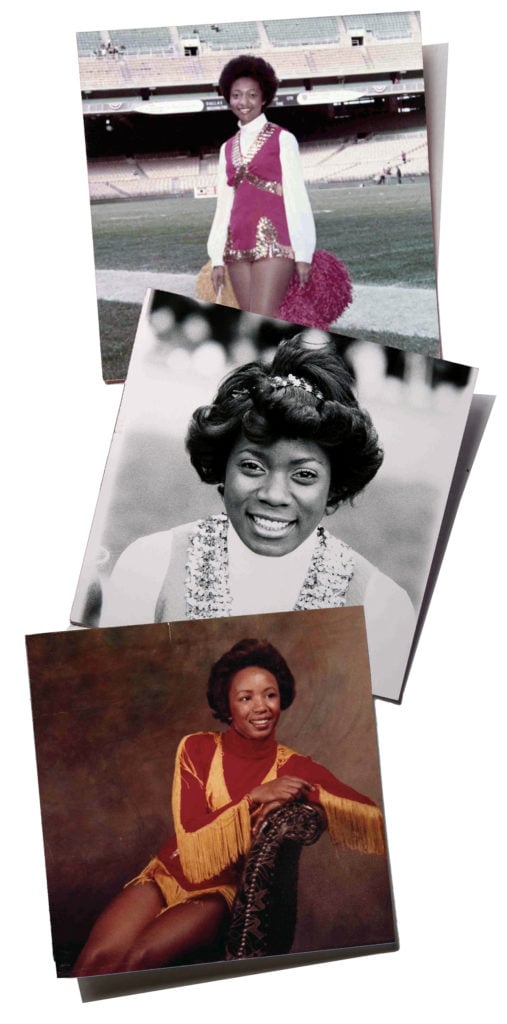


The following year, Johnson was joined by two other Black cheerleaders: a young woman named Sylvia Potts, who’s now deceased, and a Howard University student named Brenda Mosley. According to Johnson and Mosley, some of the squad’s white cheerleaders, such as Donna Bierlein, accepted them with warmth and encouragement. “They were just like any teammate,” Bierlein says. “They are wonderful, wonderful girls—I can’t say enough good things about them.”
Not everyone was so hospitable. “Half of the girls were very accommodating—they wanted to show me the ropes and help me along,” Johnson recalls. “And the rest of them didn’t even want to look me in the face. They were cold.”
Johnson and Mosley turned to each other for support. Both were already busy with other endeavors—Johnson worked full-time for the federal government; Mosley had a demanding college course load and a part-time job. Outside of the squad’s weekly practices, they began meeting regularly at each other’s houses to go over dance steps and cheer routines. They shared a unique burden. “I used to feel like ‘We have to do this right,’ ” Mosley says. “Because you’re not just representing the Washington [football team], you’re representing Black folks. And you’re also—hopefully—opening a door for other young Black women to come through.”
Across the country, cheer integration could be fraught. In the late 1960s, more than 2,000 students in Illinois and Texas staged extended walkouts after high schools in their districts fielded cheer squads with only a single woman of color. In North Carolina, the failure of a newly integrated high school to select any Black cheerleaders helped spur a riot that left a 15-year-old Black student dead and ended with the state’s governor calling in the National Guard.
Johnson and Mosley never faced that level of animosity. But even as they proved themselves to be strong performers and dependable teammates, they were reminded of their otherness. When the two changed their hairstyles from straight to Afros, the squad’s leadership pulled them aside. “Oh, we really love that hair—we love that Afro,” the leaders explained. “But your hair looks so much better the other way.”
Afterward, Mosley turned to Johnson. “Do you think they’re trying to tell us something?” she said. Ultimately, they refused to straighten their hair.
In addition to games, squad members made regular unpaid appearances at car dealerships, hospitals, and other events. Over time, Johnson and Mosley realized that only white cheerleaders were being chosen for these outings. One day, leadership selected ten white cheerleaders to represent the squad at an event at Hecht’s department store downtown. Appalled, Johnson and Mosley took a stand. “We just said, ‘Enough is enough,’ ” Mosley recalls. The two crashed the event, marching into the store and joining their teammates. Sporting name tags, Johnson and Mosley introduced themselves to the event’s sponsor and mingled with the crowd. When they returned to practice a few days later, they were certain their exercise in civil disobedience would cost them their spots on the squad. But a reprimand never came—instead, the squad’s leadership began regularly asking them to attend outside events.
The cheerleaders of color maintained a powerful sisterhood that carried them through hard times.
Yet with new opportunities came other forms of discrimination. At one point, Mosley was selected to appear alongside two white cheerleaders in a TV commercial for a product that she can’t recall. Once the filming was complete, she says, the commercial aired and all three women were paid for their work. Several months later, though, one of the two white cheerleaders told Mosley that she and the other white cheerleader had been receiving additional payments for the commercials. The news rattled Mosley, who hadn’t gotten any more checks. Angry about being taken advantage of, she also worried that blowing the whistle would cause trouble for the white cheerleader who’d alerted her to the additional payments. “So I decided not to say anything,” she recalls. “I didn’t want to make a problem for anyone else.”
This was how Johnson and Mosley handled many of the slights and indignities they confronted: quietly, with dignity and resolve. For this reason, even their supportive white squadmates, such as Bierlein, were unaware of their struggles. “I didn’t get that feeling,” she says. “I just felt like they fit right in right away.”
As Tucker ascended to the chairmanship of the DC Council, he almost never missed a game at RFK, where he had season tickets. “Our stadium rocked,” he once said. “It really did.” From the stands, he’d point to the integrated cheerleaders down on the field and offer words of encouragement to his own daughter.
“Now, someday,” Tucker would say to his daughter Lauren, “if you want to, that could be you.”
In the mid-1970s, Tucker heard from Johnson and Mosley about a problem that was making them heartsick. Though one other Black cheerleader, Sylvia Potts, was in the troupe with them, the squad’s leadership didn’t allow more than three women of color at any given time on a squad of roughly 40 members. It was an unofficial racial quota—similar to those once found on pro sports rosters—and it was infuriating. Johnson and Mosley watched talented cheerleaders fail to make the team simply because of their skin color. “So Laverne and I decided it’s time for more,” Mosley says.
During a conversation with Tucker at a restaurant in Georgetown, the civil-rights leader pledged to make things right. “He said it was unacceptable,” Mosley recalls, “and he was going to help.”
The two women don’t know exactly what Tucker did after they talked to him. But they do know this: The following season, additional women of color began joining the squad. Marlene Daniels, who arrived in 1975, was among them. When she’d first inquired about the squad, she was a 36-year-old mother of four teenagers, and she worried that the higher-ups would consider her too old. So she fudged a few biographical details—telling the team she was 25 and allowing her children to attend her final tryout only after they agreed to a few ground rules. “Go up in the bleachers,” Daniels instructed them, “and do not call me Mama!” When the squad’s leaders announced she’d made the team, however, the kids broke cover, sending down a chorus of cheers and applause. “I just about passed out,” Daniels says of the excitement.
By then, the climate of racism on the squad had improved. Marshall, the longtime team owner who’d specifically prohibited his charitable foundation from putting funds toward “any purpose which supports the principle of racial integration in any form,” died in 1969. Washington superlawyer and powerbroker Edward Bennett Williams—a Washington NFL team minority owner who was once called “a central figure in the racial desegregation of sports in our region” by the Post—essentially ran the franchise until the late 1970s.
Daniels says she didn’t encounter any prejudice from fellow cheerleaders or squad leaders. Still, the cheerleaders of color maintained a powerful sisterhood that carried them through hard times. Shortly after joining, Daniels had to undergo an invasive medical procedure. The lengthy recuperation forced her to miss several weeks of practice, and the squad’s director said she’d have to learn the new routines’ steps on her own time. “And if you can’t,” the director explained, “we’re just going to have to remove you from the squad.”
Another member of the squad, Viola Hubbard, jumped in to help. A Black woman living in DC, Hubbard was already working full-time for the federal government, but when she learned of Daniels’s predicament, she became a personal cheer coach, too. On weekends and after work, Hubbard met with her to practice dance steps and go over the new routines. “She taught me everything,” Daniels says. “By the time I was able to return, I knew just as much as everybody else.” A few years later, Daniels became the squad’s first Black choreographer.
All the while, the women were becoming locally famous. People stopped Mosley on the street to say they recognized her. Hubbard’s boss at the Department of Transportation was so thrilled to have an NFL cheerleader on staff that he pitched in to make sure she was ready for game day. “You go in my office and practice,” he told her, “and I’ll sit out here and do your job.” Johnson’s ex-boyfriend, a cameraman for CBS Sports, saw to it that footage of the team’s first Black cheerleader was frequently included in game-day coverage. “People were calling and telling me, ‘We just saw you!’ ” Johnson recalls.
By the mid-’70s, both Johnson and Mosley were selected as squad captains. Then bad news arrived. As the 1975 season drew to a close, Mosley noticed a lump on her breast. At first, she was too worried to see the doctor. But at the insistence of Johnson and others, she made an appointment and received a grim diagnosis: breast cancer. She’d need a mastectomy.
Back then, there were no pink ribbons or 5K charity runs, and no national network of support for women with the disease. Moreover, Mosley recognized that, as an NFL cheerleader, she was a sexualized figure. Now her body would be different. At age 27, she worried that even if the surgeons succeeded in eradicating the cancer from her body, her time with the squad might be over. “I didn’t know if I was going to be welcomed back,” she says.
When squad director Dick Garrison learned of the diagnosis, he immediately reached out. There was no way he was letting cancer take away his captain, he said. The team would make every accommodation necessary to ensure Mosley’s return. You come back, Garrison insisted.
For months after the surgery, Mosley worked with her family and Johnson to recover the range of motion in her arm. A seamstress made alterations to her cheer outfit so the effects of the surgery wouldn’t show. In the fall of 1976, she was back performing at RFK. No only had Washington’s pioneering Black cheerleaders shattered the boundaries of segregation, but they had established themselves as indispensable members of the team. “I get emotional when I talk about it,” Mosley says. “It was just very special to me.”
While entire books have been written about the integration of the Washington NFL team’s playing roster, the cheerleaders’ story has seldom been told. Adams, the University of Alabama professor and cheer historian, says that’s partly because cheerleading is often dismissed as frivolous. “It’s been seen as [too] insignificant for any serious academic or journalistic study,” Adams says.
Jamilla Keene sees things differently. A member of the DC team’s squad from 2003 to 2012, she was the first Black person to serve as the team’s cheerleading director, a position she held until 2021. A few years ago, she and a group of other cheerleaders of color invited Johnson, Mosley, and Hubbard to get together. Over the course of the evening, the young women listened in rapt silence as their elders described the heartache and triumphs of their journey. “They’re such a huge inspiration,” Keene says. “And then to be able to say that I stood in their shoes right after them—that means a lot.”
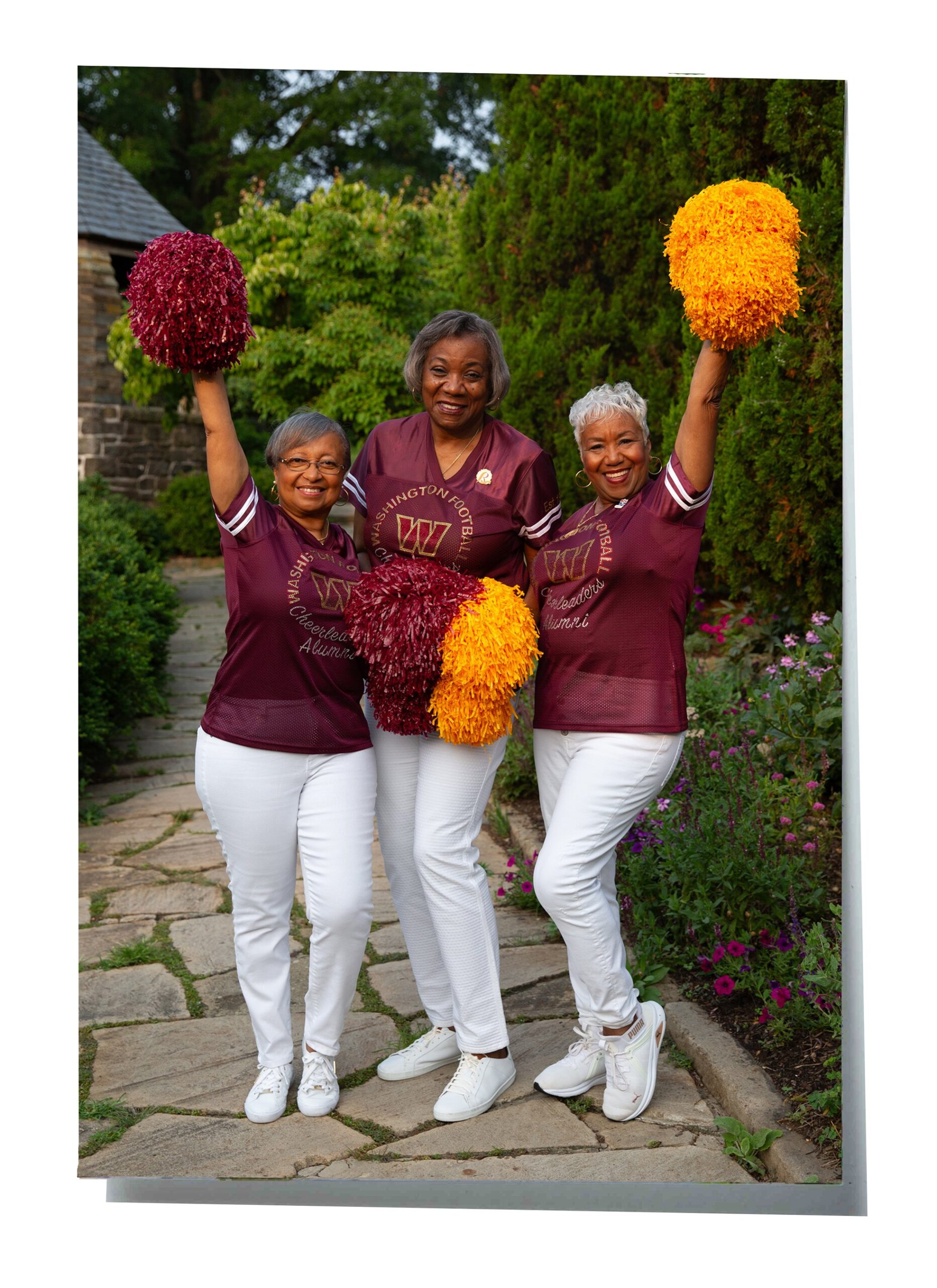


Tucker never stopped working. After chairing the DC Council, he went on to serve as an assistant secretary for the federal Department of Housing and Urban Development, become the highest-ranking anti-drug official in the District government, and come within 1,500 votes of defeating Marion Barry in the Democratic primary for the 1978 mayoral race. He passed away in the summer of 2019, at age 95. In an interview with the Post more than two decades earlier, Tucker described his 35 years of cheering on the team as an RFK season-ticket holder. “We were the 12th man,” he said. “They belonged to the District and, man, we belonged to them.”
Today, Johnson, Mosley, and Hubbard remain dear friends—helping one another through the deaths of family members, meeting up for birthday lunches, and heading out of town on vacations together. This past spring, the trio traveled to New Orleans, where they ate charred oysters and visited the New Orleans African American Museum. Next year, they plan to visit Egypt, where they’ll take a cruise down the Nile. “It’s just a special bond,” Mosley says.
Among their favorite occasions are the annual alumni events in which former cheerleaders are invited back to perform during halftime of Commanders games. Prior to a practice at the club’s Ashburn training facility for one of those fall Sundays, Hubbard picked up Johnson and Mosley in the plush black SUV that her husband, who runs a limousine service, uses to chauffeur celebrities like Bono and Alicia Keys. On the way there, the three stopped at a nearby Wegmans, where they had lunch in the food court. At one point, other customers noticed their matching Commanders alumni jerseys. Coming closer, they couldn’t help but ask, “Were you all cheerleaders?”
This article appears in the November 2023 issue of Washingtonian.
This post was originally published on this site be sure to check out more of their content.

